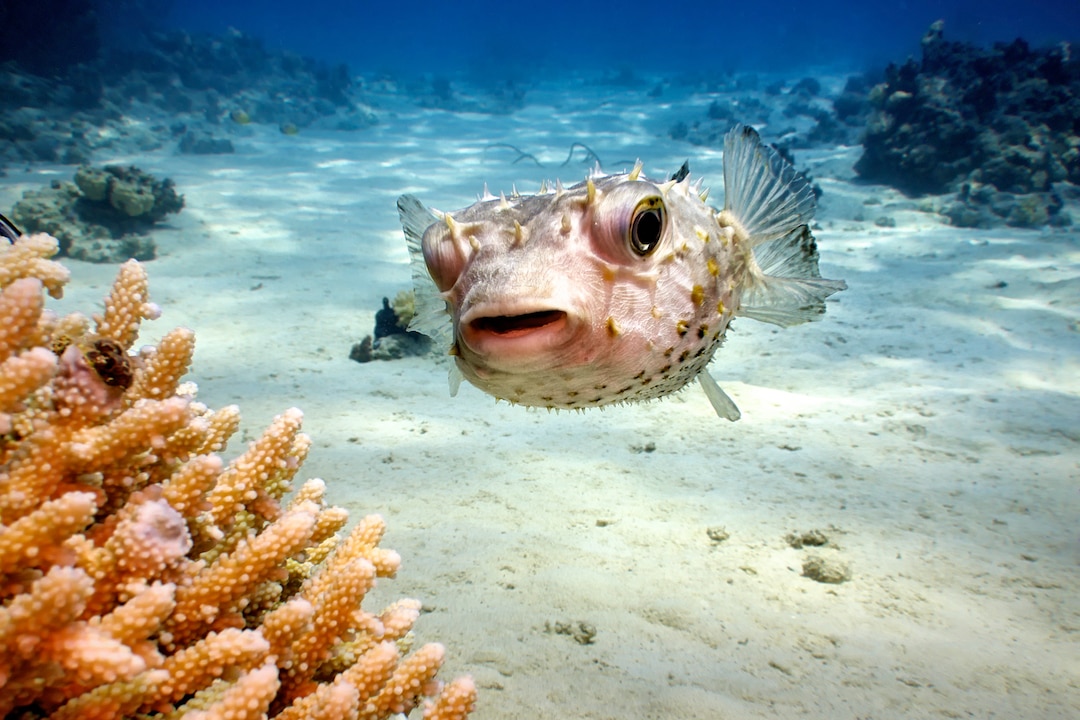Create a free profile to get unlimited access to exclusive videos, sweepstakes, and more!
Puffer fish use modified toxins to communicate with one another
Talk about words that sting.

In 1984, Melvin Ferd Junko III was living a lackluster life as a janitor at a Tromaville health club when he unwittingly became The Toxic Avenger (now streaming on Peacock!). His exposure to toxic chemicals resulted in a bodily transformation unmatched since Steve Rogers became Captain America, although it made fewer magazine covers. It did, however, provide a way for Melvin to combat predatory criminals in his small town, and maybe even communicate better with his peers.
For humans, such a toxic defense mechanism is the stuff of fiction, but for puffer fish it’s just an ordinary day. Now, new research reveals that the killer neurotoxin puffer fish depend on — known as tetrodotoxin or TTX — is also used for communication. The findings were published in the journal Scientific Reports.
In nature, puffer fish accumulate TTX through their diet, in a process known as toxification. It’s the same process poison dart frogs use to accumulate toxins from ants and store them in their bodies. In puffers, those toxins are collected in the liver, ovaries, and skin, and are believed to have several uses. Toxin excreted from the ovaries could coat eggs during spawning and protect them from predators while they develop. Toxins in the liver and skin act as a deterrent to predators who might try and eat adults, and those predators include humans. Puffer fish is a well-known delicacy in some parts of the world and must be prepared carefully to avoid exposing the consumer to the potentially fatal poisons.
In addition to defense, researchers had a hint that the toxin might be used in some form of chemical communication. Previous studies working with grass puffers revealed that sexually active males were attracted to TTX released into the water, which suggests they are able to sense it and may use it to communicate with one another. But that turned out to be only part of the story. In this new work, researchers set their sites not on TTX, but on a chemically similar but less toxic analogue called 5,6,11-trideoxyTTX. TDT for short.
Scientists knew that puffer fish were also accumulating TDT in their bodies, but it was unclear why. They knew it didn’t offer the same sorts of defensive capabilities as TTX, and yet there it was. The only question was what it was doing. To find out, scientists gathered TTX and TDT and placed them one at a time into an aquarium with grass puffers. Surprisingly, the puffers didn’t respond to TTX, but they did respond to TDT. When the analogue was released into the water, puffers would group together near the point of release and slow their swimming speed. This result stood in stark contrast to the previous studies, which had identified TTX as a potential communication pheromone, not TDT.
The explanation might be that in the wild these two compounds are bound up together. Prey animals likely produce both the toxic compound TTX and its less toxic counterpart TDT. When puffers chow down on prey animals, they uptake both TTX and TDT. While researchers believed TTX was the active sensory component, it might have been TDT all along.
That would explain why TDT accumulates in the bodies of puffer fish when it was previously assumed to be useless, or at least not well understood. Functionally, puffer fish can assume that if they detect TDT, then TTX will also be there. That allows puffers to use TDT as a form of communication among peers as well as predators or prey. Smelling TDT in the water suggests one of two things to a puffer; either there are prey animals nearby and they can get a quick snack and top up their toxic defenses, or there are other puffers nearby and it might be time to get busy reproducing.
If researchers are right, and the results suggest that they are, then TDT might be an important component of mass spawning events, during which countless puffers aggregate during high tide evenings in early summer to produce the next generation. The work serves as confirmation of the complex chemical and communicatory relationships happening all around us.
There’s something almost poetic about the knowledge that puffer fish speak with neurotoxins, and that words or compounds so similar to one another, just a few letters difference, can communicate love and lunch, all at the same time.


























